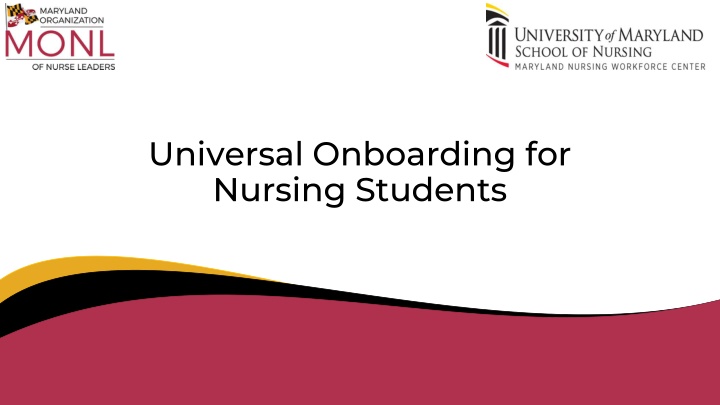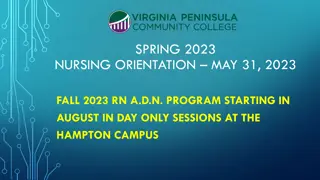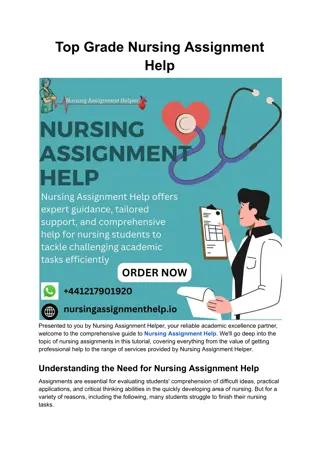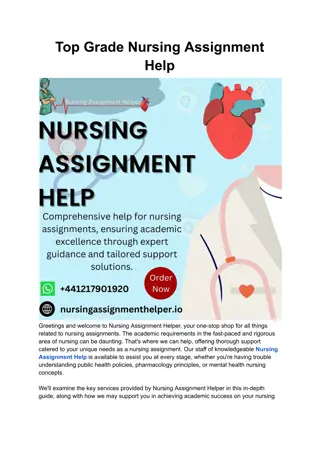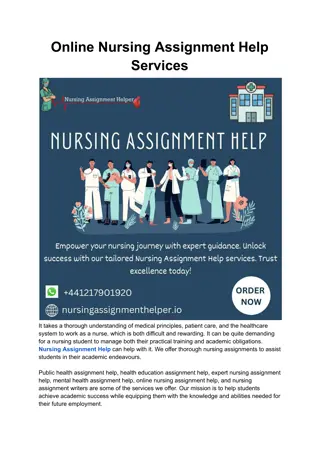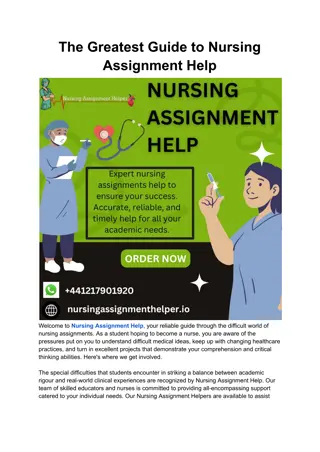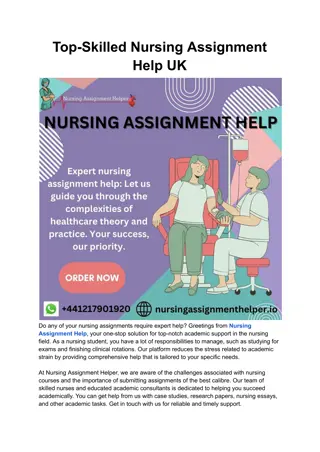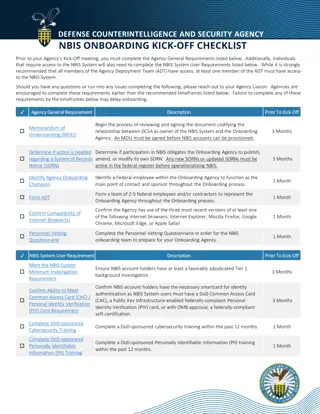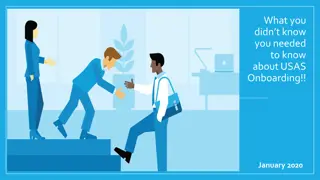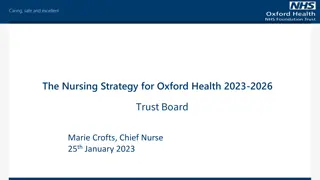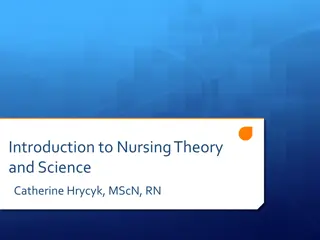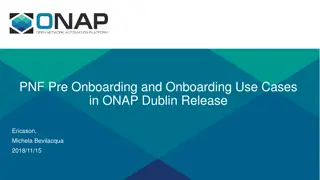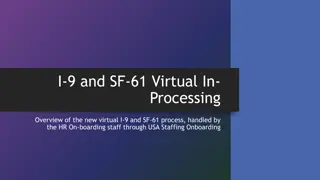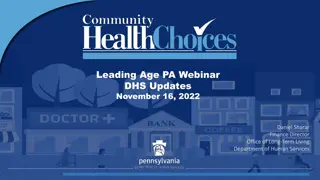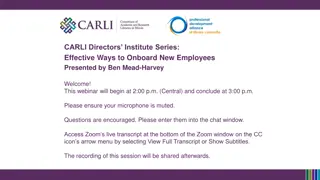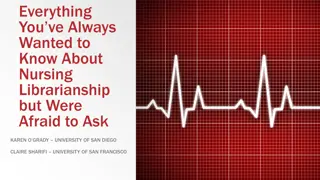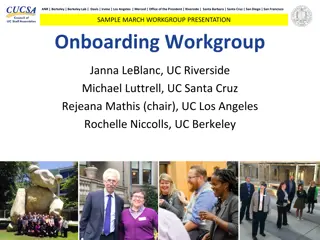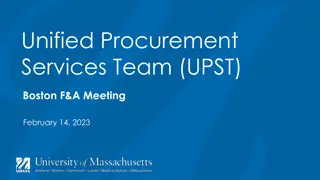Universal Onboarding for Nursing Students: Addressing Training Challenges
Addressing the underpreparedness of new nursing professionals due to a lack of immersive clinical experiences. The project aims to streamline mandatory training requirements to enhance student learning opportunities and reduce redundant work. A comprehensive overview of the initiative, challenges faced, assessments made, recommendations presented, and the scope and phases of the project are outlined.
Download Presentation

Please find below an Image/Link to download the presentation.
The content on the website is provided AS IS for your information and personal use only. It may not be sold, licensed, or shared on other websites without obtaining consent from the author.If you encounter any issues during the download, it is possible that the publisher has removed the file from their server.
You are allowed to download the files provided on this website for personal or commercial use, subject to the condition that they are used lawfully. All files are the property of their respective owners.
The content on the website is provided AS IS for your information and personal use only. It may not be sold, licensed, or shared on other websites without obtaining consent from the author.
E N D
Presentation Transcript
Universal Onboarding for Nursing Students
Situation New to practice nurses are underprepared d/t a lack of immersive clinical experiences. Hospital mandatory training requirements for students set forth by accrediting bodies and regulatory agencies causes redundant work and loss of clinical experiences for students
Background Before starting their clinical rotation at a hospital, students must complete mandatory accrediting bodies and regulatory agencies training requirements. Annually, students complete similar training at multiple organizations.
Assessment Nursing Programs Students lose clinical time d/t required training Difficulty tracking and monitoring student adherence Time-consuming, inefficient Resource intensive Costly Hospitals Resource intensive significant number of hours spent by hospital education departments training and tracking students Costly No return on investment
Recommendation The Maryland Nursing Workforce Center received an NSP II grant to develop statewide, standardized onboarding training materials students can complete before their first clinical experience and then annually until the completion of their program.
Project Scope Prelicensure nursing students (ADN/BSN/entry to practice MS) enrolled in a Maryland Nursing Program Acute care Maryland hospitals
Universal Onboarding Phase I Universal Onboarding Module Develop statewide, standardized onboarding training materials for students to complete before their first clinical experience and then annually until completion of their program Maryland Nursing Workforce developed a committee consisting of hospital nursing leaders and nursing program faculty to jointly create mandatory training materials Hospital leaders review training materials for compliance and then approve for student use MONL, Inc./MNRC makes the training module available to nursing programs for downloading
Universal Onboarding Module Topics Corporate Compliance and Code of Conduct Cultural Competency and Respect Hospital Acquired Conditions and Hospital Consumer AHPS Infection Control and Exposure Prevention Patient Bill of Rights and Responsibilities Patient Confidentiality, HIPAA and PHI Personal Protective Equipment and Transmission Based Precautions
Universal Onboarding Hospital Feedback Fire/Electrical Safety/Hazmat/Radiation safety? Safe Patient Handling Patient Care & Protection (Developmentally appropriate care, patient assault & abuse) Workplace Safety (workplace violence, active shooter, emergency management)
Universal Onboarding Phase II Hospital-specific Information Phase II Taskforce comprised of hospital leaders and facilitated by MONL, Inc./MNRC develop guidelines and a template for hospital-specific student materials Meet with hospital leaders and affiliation coordinators to share guideline requirements Hospitals submit materials to MONL, Inc./MNRC to upload and make available for nursing programs to access Faculty monitor student completion
Hospital-specific Student Materials Hospital-specific information should pertain only to requirements a student must know before starting clinical Need to Know vs Nice to Know Can the information be maintained on the unit or provided by the Clinical Instructor? Hospital-specific information should not repeat education provided in the modules Hospital-specific information should not include hospital/department/unit clinical policies & procedures Policy and Procedure guides for students/clinical faculty/instructors can be provided in the work environment All information must be submitted in One PDF
Types of Hospital-specific Information 1. Recommend the first page is a checklist to guide students in completing the packet/any necessary forms 2. Organization Mission, Vision, and patient population served 3. Hospital-specific information about parking, entrances, badges, etc. 4. Emergency codes, emergency contact numbers, compliance, accident/incident reporting 5. How to find policy and procedures 6. Smoke-free and drug-free policies 7. Policy on use of social media & personal electronic devices
Nursing Program Responsibilities 1. Develops processes to ensure students are compliant with their education POC tracks student completion at the start of their prelicensure program and then annually Recommend all incoming students complete within the first 2- weeks of their nursing program (must be done before starting clinical) Recommend annually in August all nursing programs require currently enrolled students to complete 2. Develops processes for uploading data into Castlebranch or other tracking systems 3. Provides student completion to hospitals upon request (test scores cannot be shared)
Student Responsibilities 1. Completes training before starting first clinical experience and thereafter annually 2. Maintains hospital training (ensures current before starting any new clinical experience) Recommend consequences for not completing
MONL, Inc./MNRC Responsibilities 1. Uploads and makes available all education materials to nursing programs 2. Provides support to nursing program POCs
Hospital Responsibilities Hospital can receive a student completion report from the Nursing Program for accrediting body visits, like the Joint Commission FERPA compliance- hospital leaders blocked from viewing student records
Hospital Responsibilities cont 1. Review, propose revisions to, and approve Universal Onboarding modules for use by the healthcare system or individual hospital 2. Provide and maintain currency of hospital-specific PDF uploaded in the LMS
Benefits Consistent standardized student education Ease of maintaining updates to materials Reduces redundancy in student education Increases student clinical time Improves efficiencies, less resource intensive for nursing programs and hospitals Provides accurate record keeping for MD nursing programs and hospitals to track and monitor student hospital education compliance
Faculty: The Ask! Please email Molly Somerville at msomerville@monlmnrc.onmicrosoft.com, the name of the POC for your nursing program
Hospitals: The Ask! According to guidelines, identify content for hospital- specific student information
